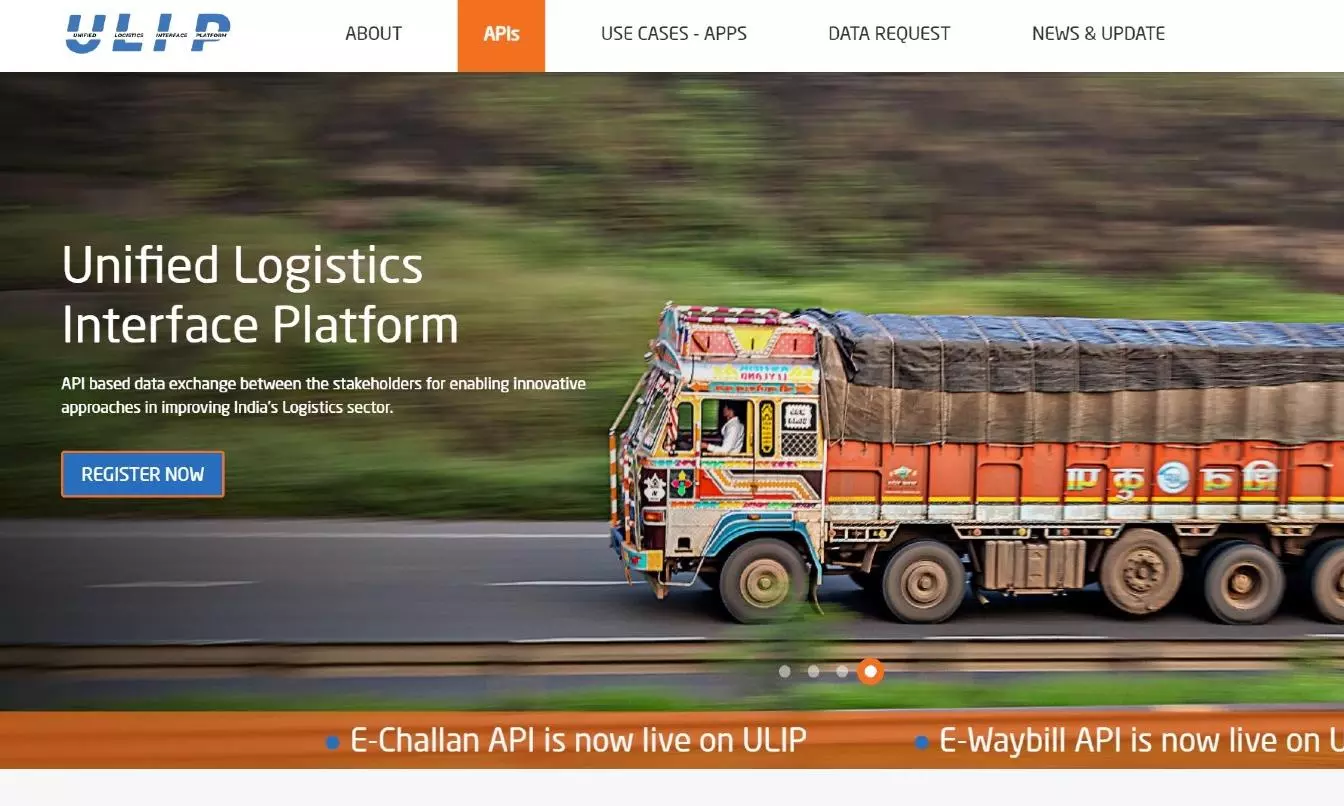How Unified Logistics Interface Platform is revolutionising logistics

Logistics operations in India have long been plagued by persistent issues such as delays, significant underutilisation of vehicles, and a prevalent occurrence of trucks running empty. These challenges have severely hindered the efficiency of the transportation network.
The logistics chain in the country has typically involved 2 to 3 intermediaries situated between the truck driver and the consignor. These intermediaries tend to impose commissions. This results in substantial financial losses for truck owners. A significant portion, approximately 15 to 20 percent of their revenue is lost due to these intermediary charges.
Moreover, the transport and warehousing sectors were not able to leverage modern technology in the past. This led to a relatively low level of operational efficiency within the industry. This lack of technological integration has hampered transparency and the ability to keep pace with evolving demands. Elevated indirect costs in the logistics industry have been attributed to unpredictable supply chains and insufficient first and last-mile connectivity. According to the World Bank’s ‘Doing Business 2020’ report, customs clearance for imports in India takes an average of 14 days, significantly higher than the global average of 8 days.
These inherent challenges contributed to increased operational complexities and elevated costs. This underscored the urgent need for strategic interventions to streamline processes and enhance overall efficiency. It is in this context that Unified Logistics Interface Platform (ULIP) emerges as a solution.
In businesses requiring the seamless transport of goods, the ULIP Platform emerges as a critical asset. It furnishes pertinent information for enhanced operational efficiency. Through real-time tracking, it provides valuable insights into logistics activities. This includes shipments, inventory levels, and orders, offering a comprehensive perspective for both small and large-scale business owners, and logistics stakeholders. This holistic view facilitates the identification of operational bottlenecks, empowering swift and strategic actions.
Functioning as a sophisticated tool for transportation network optimisation, the platform considers key factors such as distance, capacity, and cost to determine the most efficient routes and transportation modes. The overarching objective is to minimise transportation costs, streamline delivery times, and maximise resource utilisation. Facilitating seamless integration among logistics stakeholders—spanning suppliers, manufacturers, distributors, and carriers—the platform enables the smooth exchange of critical data and information, fostering coordination and collaboration.
Introduced in 2022, the inception of the Unified Logistics Interface Platform (ULIP) represents a transformative leap towards digitizing the logistics sector, spearheading increased efficiency. As an integral component of the National Logistics Policy, this initiative stands as a catalyst for substantial growth within the logistics industry.
ULIP is designed to enhance the nationwide logistics landscape by prioritising strategic inventory management, enhancing supply chain visibility, streamlining operations, and effecting cost reductions. At its core what it does is, it seeks to empower the logistics sector by enabling real-time monitoring of freight and ensuring the utmost data confidentiality through end-to-end encryption.
We are witnessing that this initiative is continuing to establish seamless connectivity among all stakeholders, offering real-time tracking capabilities. Built upon a foundation of 100+ Application Programming Interfaces (APIs) covering over 1600 fields, ULIP operates as a responsive system that aggregates data from diverse channels.
These APIs play a pivotal role in optimising logistics performance, providing end-to-end visibility, real-time tracking of in-transit operations, and fostering seamless collaboration among participants. The initiative positions itself as a dynamic force propelling the logistics industry into an era of heightened efficiency and collaboration.
ULIP has emerged as a catalyst for logistics companies and I believe that it has proved very beneficial in aiding in the efficient scheduling and routing of shipments. This, in turn, results in tangible cost reductions associated with transportation and logistics. Since the past few years, businesses like us, the various other industry stakeholders and the government are making a collaborative effort to slash logistics costs from 13% to 8% of the GDP, with an ambitious target of achieving a remarkable 40% reduction within the next five years. ULIP is crucial to this strategy and it will help position the logistics industry as a pivotal growth engine, playing a significant role in propelling India toward a US$ 5 trillion economy.
In addition to this, the government's increased investment in technology underscores a forward-thinking approach, augmenting our competitive edge and optimizing the entire supply chain. This visionary stance highlights the pivotal role of transformative technologies like the ULIP platform in logistics optimisation, driving economic growth, and championing sustainability in the dynamic landscape of global trade.
The views and opinions expressed in this article are those of the author and do not necessarily reflect the views of Indian Transport & Logistics News.



